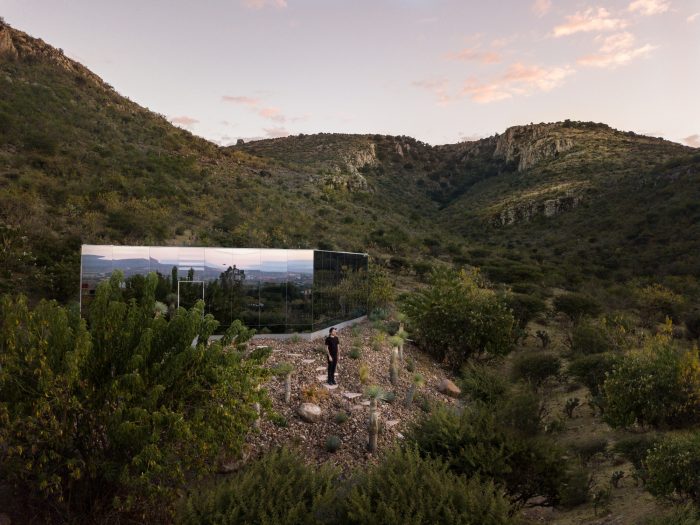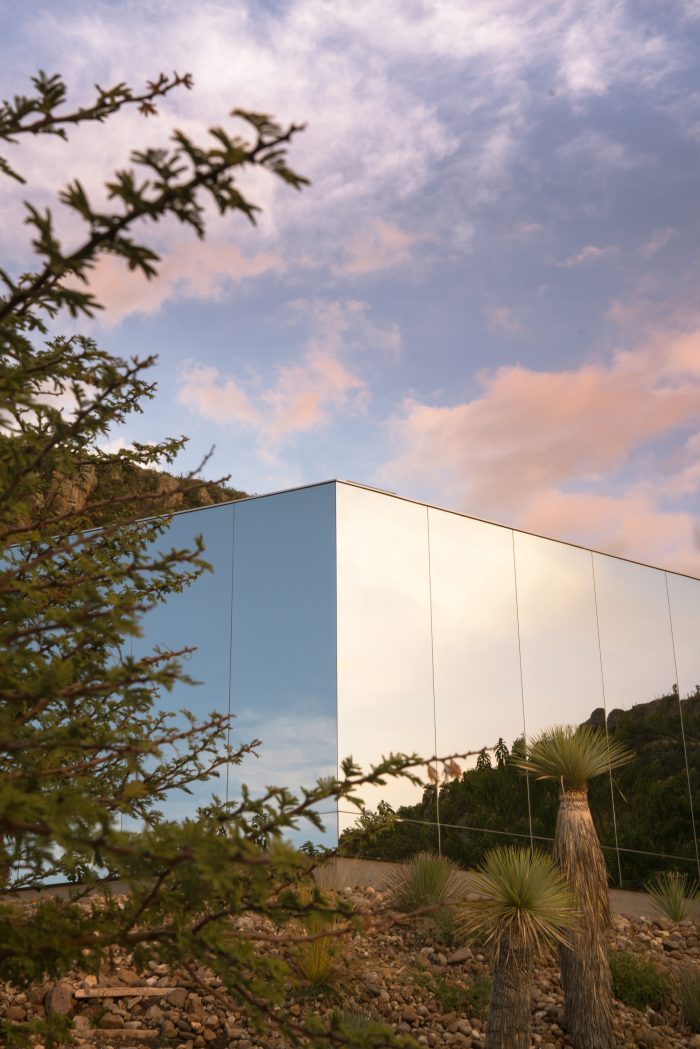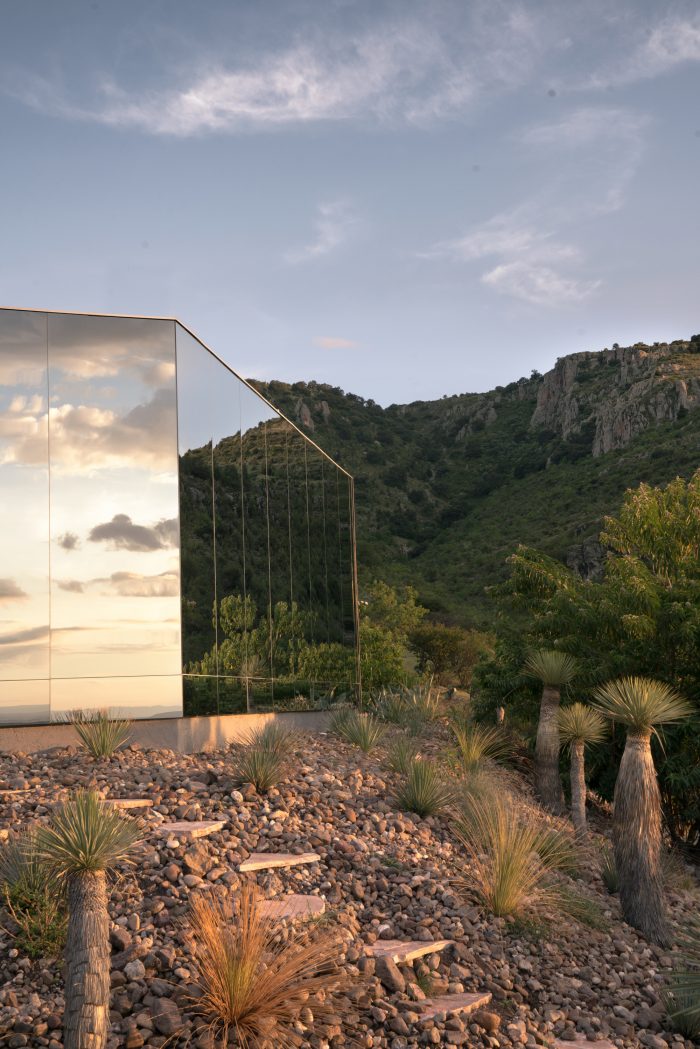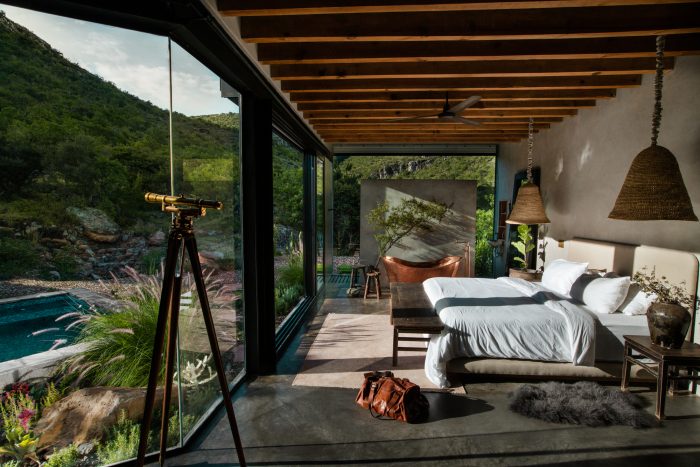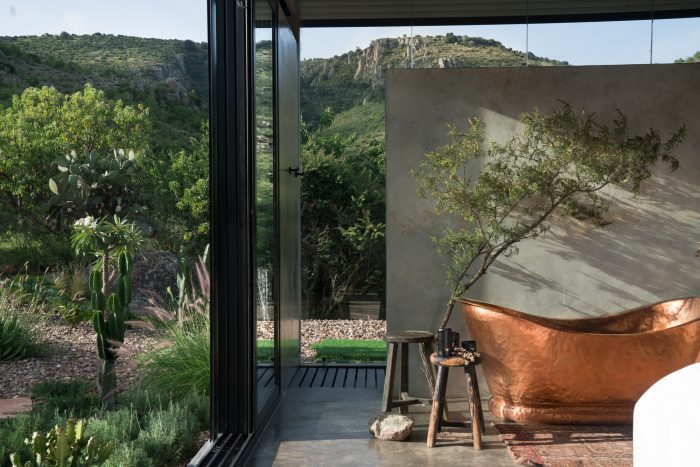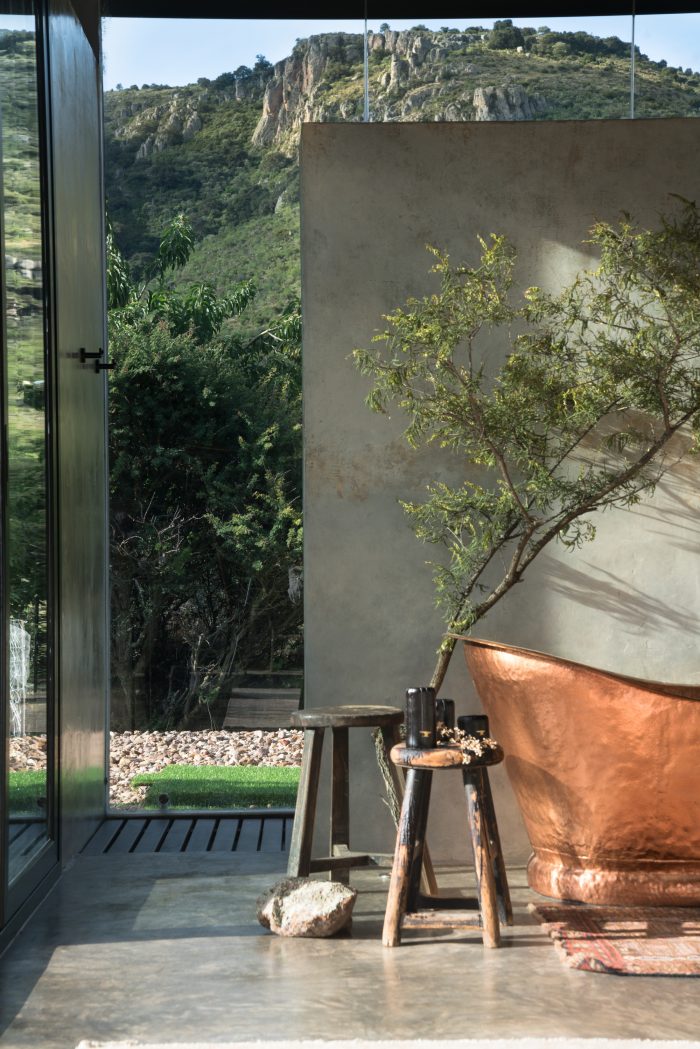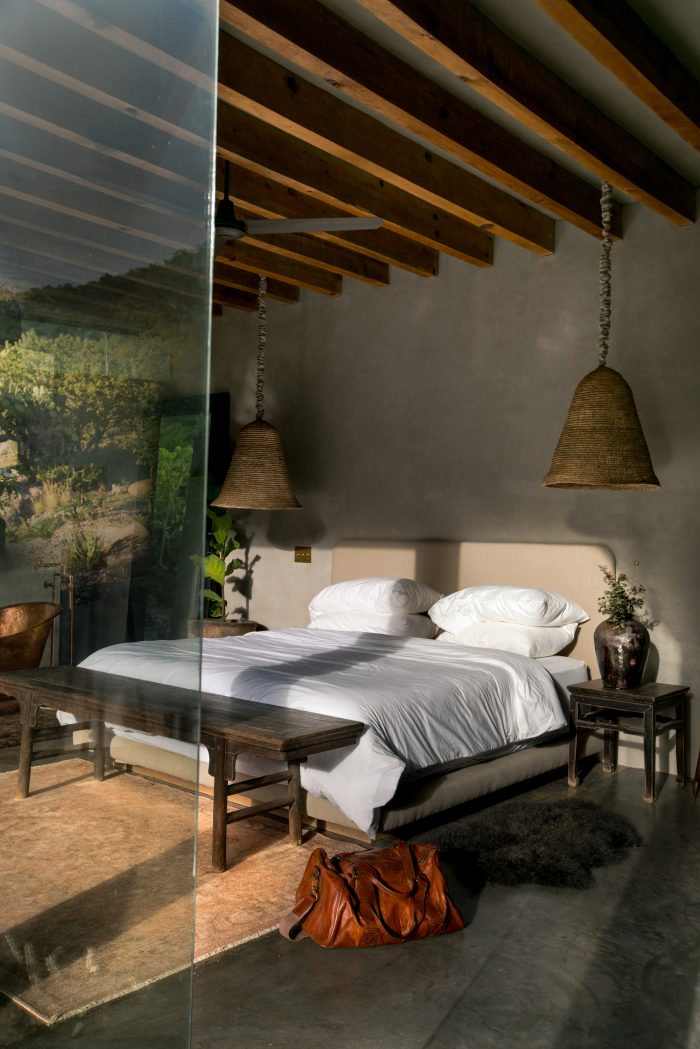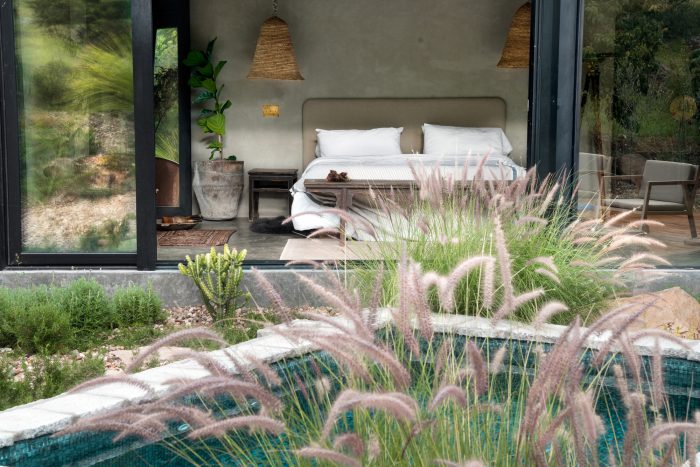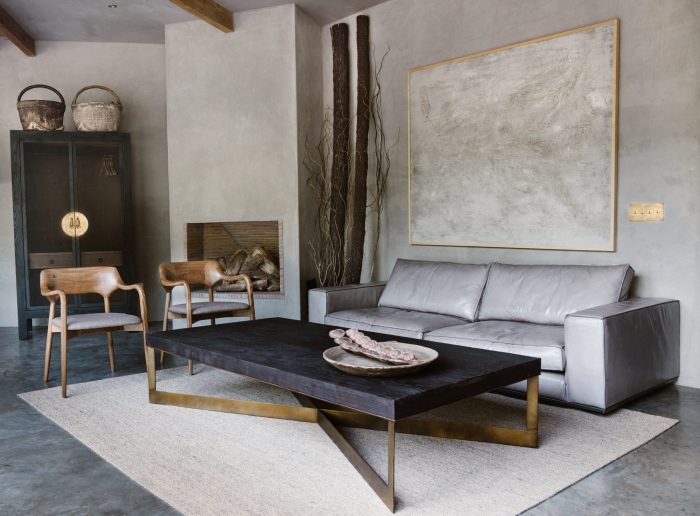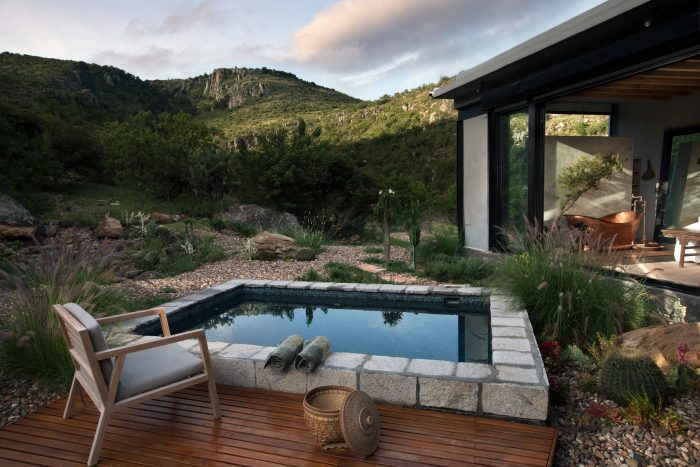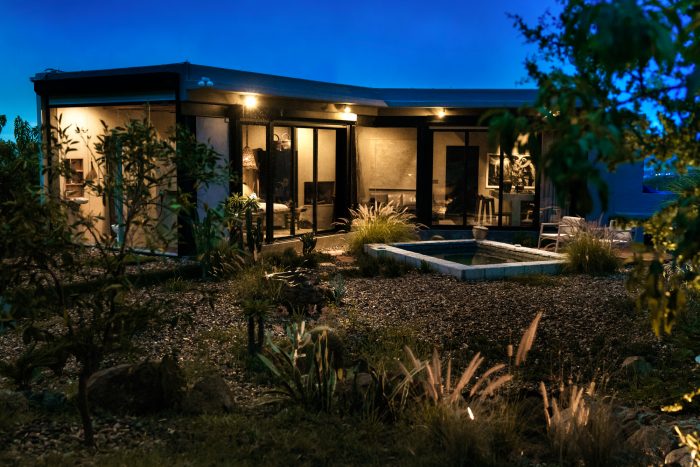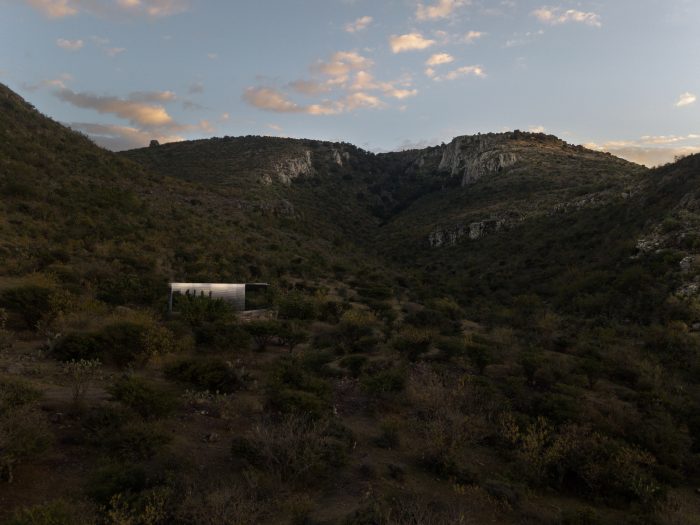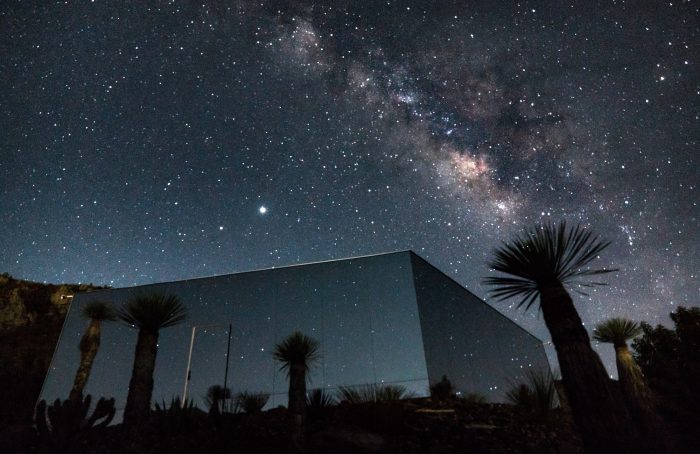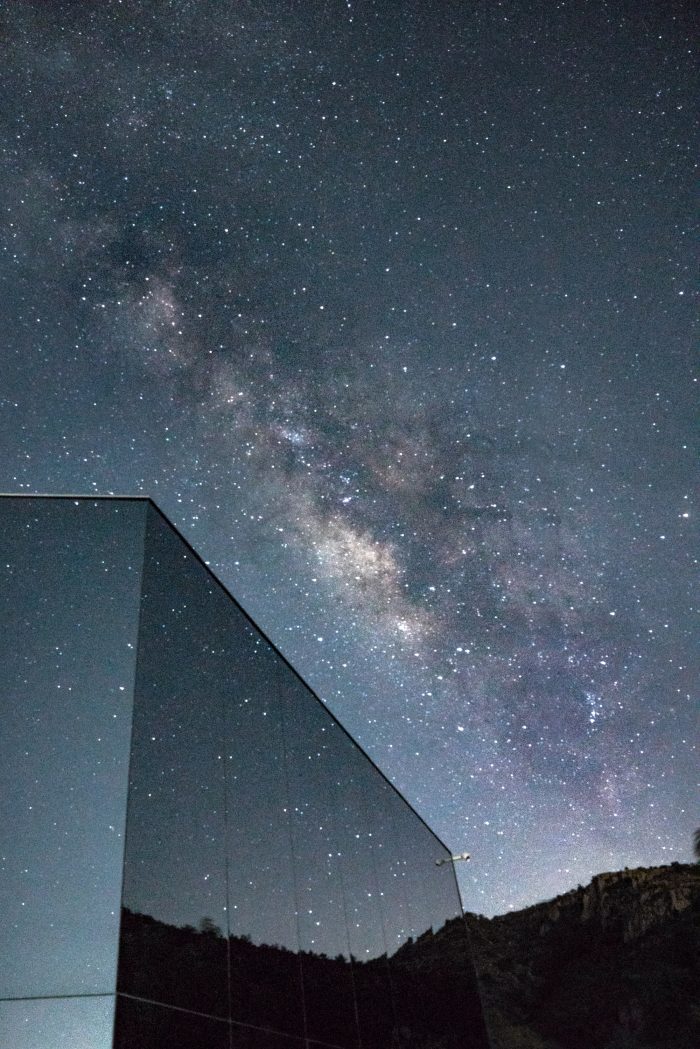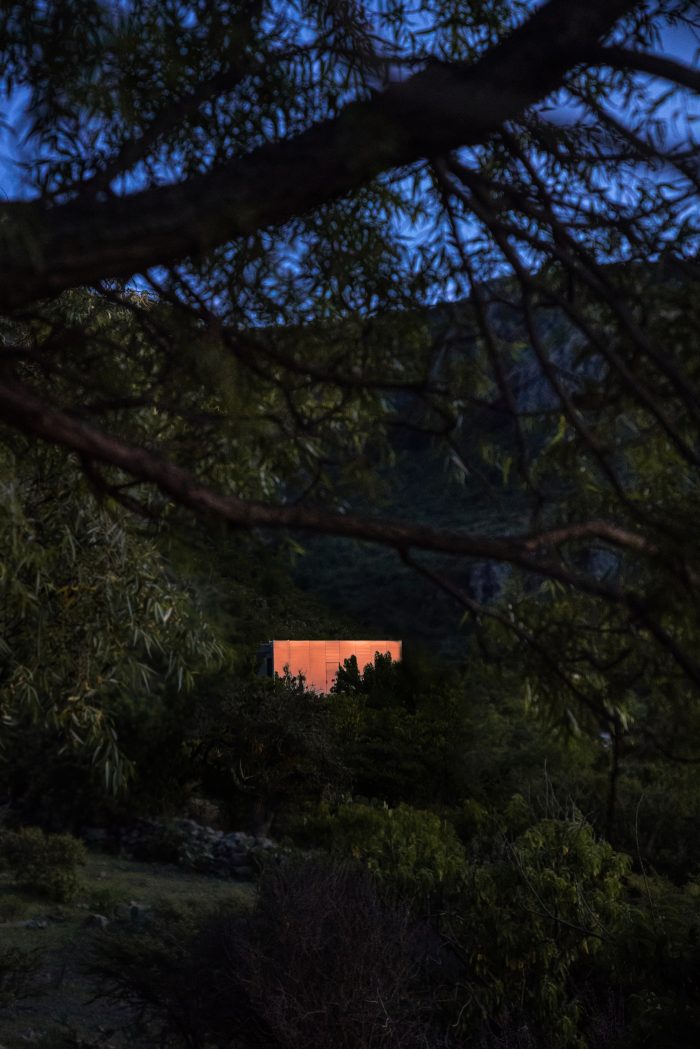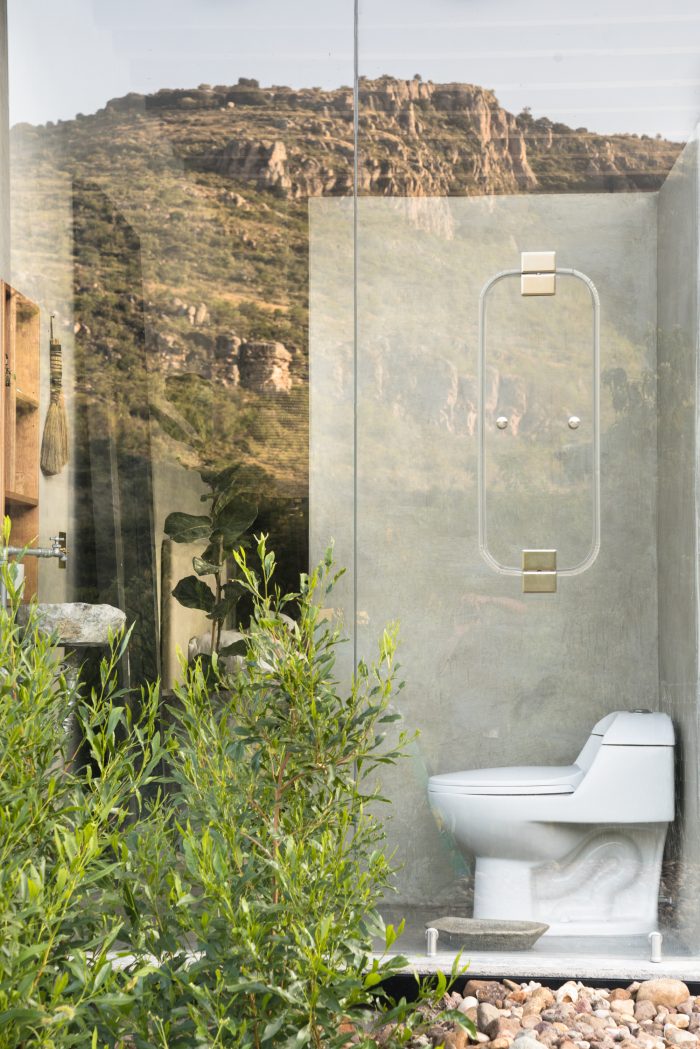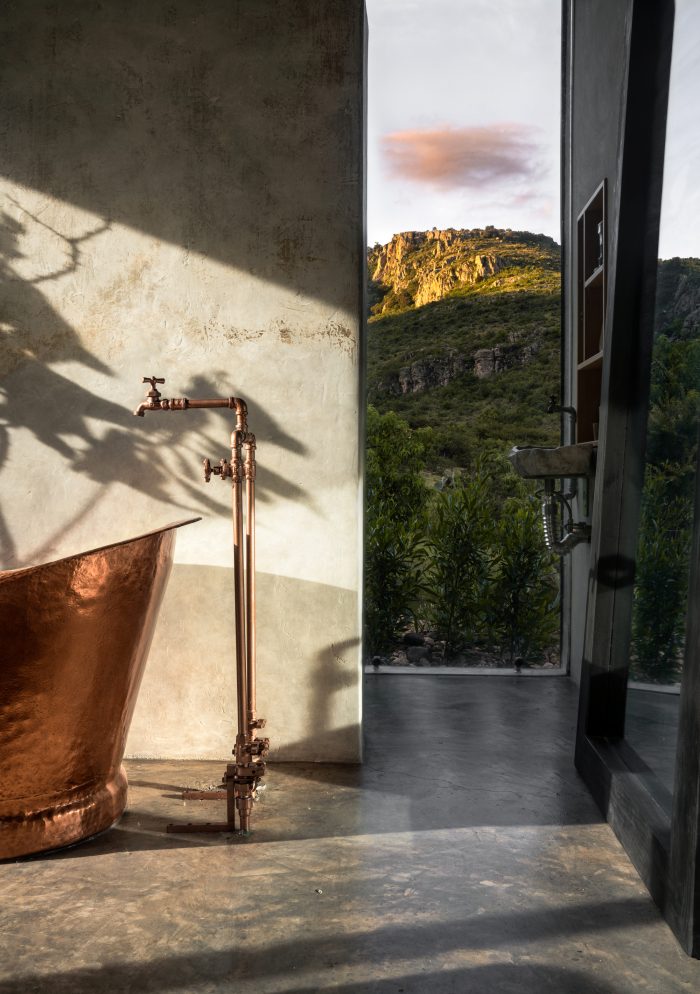可持续发展和一体化进程
由墨西哥的新加坡作家和设计师Prashant Ashoka设计的这个75平方米的住宅,是两个人的离网隐居地,它的电力全部来自于太阳能;它的供水来自于收集的雨水;并在镜子上使用了图案化的紫外线涂层,使它能被鸟类看见,同时又能反射到人眼里。
SUSTAINABILITY AND INTEGRATION
Conceived as an off-grid hideaway for two – by Mexico-based Singaporean writer and designer Prashant Ashoka –Casa Etérea is a 75-square-metre dwelling that draws all its power from solar energy; its water supply from collected rainwater; and uses a patterned ultraviolet coating on the mirror making it visible to birds while remaining reflective to the human eye.
“我们的愿景是创造一个自然的剧场”,Ashoka解释说,”因此,可持续发展是实现与环境真正完全融合的关键”
从不破坏景观的意图出发,房子的地基完全由山外采集的岩石建成。而通过利用场地朝向、高效的通风设计和隔热玻璃,房子在墨西哥中部高原的半干旱沙漠气候中自然调节温度。
“The vision was to create a theatre to nature”, Ashoka explains, “so sustainability was crucial in achieving a truly complete integration with the environment”
Working from an intention to leave the landscape untouched, the foundation of the house was built entirely from rock collected off the mountain. And by utilizing site orientation, efficient ventilation design, and insulated glass, the house naturally regulates temperature in the semi-arid desert climate of the central Mexican highlands.
房屋描述
开放式规划的概念由两个直线体量组成,它们在120度的V形交汇处合并–通过暴露的玻璃淋浴间,可以看到一条错落有致的峡谷,画出一个棱角分明的样子。
HOUSE DESCRIPTION
The open-planned concept consists of two rectilinear volumes that merge at a 120-degree V-shaped intersection – drawing an angular likeness to a staggering ravine visible through the exposed glass shower.
从中央起居室和卧室,落地滑动玻璃门框住了高耸的悬崖美景,同时打开玻璃门连接到甲板上的庭院和游泳池区域,橄榄树和石榴树遮蔽着。在私密的厨房后面,一个屋顶楼梯通道可作为杂物间,并增加了遥控的户外PVC百叶窗,以提供安全和隐私。
From the central living space and bedroom, floor-to-ceiling sliding glass doors frame vistas of towering cliffs, while opening to connect with a decked patio and pool area shaded by olive and pomegranate trees. Behind the intimate kitchen, a rooftop stairway access doubles as a utility room, and remote-controlled outdoor PVC shutters were added to provide security and privacy.
设计理念
受墨西哥建筑师路易斯-巴拉甘(Luis Barragán)和雕塑家-画家马蒂亚斯-戈埃里茨(Mathias Goéritz)提出的 “情感建筑 “概念的启发,Casa Etérea通过使用外部镜面板来创造一种视觉上的抽象和互动体验,实现了这种更深层次的感官共鸣。镜面立面扩散了野生和结构之间的边缘空间,同时使体积在反映季节变化时具有过渡性。
CONCEPT
Heavily inspired by the concept of “emotional architecture,” – coined by Mexican architect Luis Barragán and sculptor-painter Mathias Goéritz – Casa Etérea achieves this deeper sensory resonance by using exterior mirrored panels to create a visually abstract and interactive experience. The mirrored façade diffuses the liminal space between the wild and the structured while allowing the volume to take on a transitional quality as it reflects the unfolding seasons.
当第一道光照进来的时候,房子就像一个磷光闪闪的蓝色盒子,与山坡上毛毡般的夜色形成玻璃般的对比。在夕阳的斑驳色泽中,这栋房子像海市蜃楼一样在风景中闪烁,然后完全消失–它的结构边界从未试图改变它所处的环境。
As it catches first light, the house gleams as a phosphorescent blue-tinged box, standing in glassy contrast against the felted nocturnal blackness of the mountainside. And in the ombre hues of sunset the volume scintillates against the landscape like a mirage, before disappearing entirely – its structural boundaries never once attempting to alter the surroundings in which it sits.
为了暗示建筑的这一品质,”Etérea “这个名字从西班牙语翻译过来就是 “空灵”,暗示着一种缥缈的、异域的视觉。无论从视觉上还是功能上,这个项目都涉及到建筑作为特定场地的装置艺术和环境的延伸。
Alluding to this quality of the building, the name ‘Etérea’ translates from Spanish to ‘ethereal’, and suggests a nebulous, otherworldly vision. Both visually and functionally, the project touches on architecture as site-specific installation art and as an extension of the environment.
关于在建筑与地形之间创造一种对等的对话,Ashoka说:”光成为这个设计的一个结构性元素,扭曲了观察者开始和景观结束的视角。我希望这种光和尺度的相互作用能唤起人们对野生动物的深深敬畏感,并对我们在保护生态系统中作为管理者的角色提出疑问”。
On creating a reciprocal dialogue between the construction and its terrain, Ashoka says: “Light becomes a structural element of this design, distorting the perspective of where the observer begins and the landscape ends. I wanted this interplay of light and scale to evoke a deep sense of awe for the wild, and to beg questions about our role as stewards in the preservation of our ecosystems”.
孤立主义的旅行
随着越来越多的旅行者在关注社会距离的同时寻求远程体验,这些空间也有机会发展起来,以激发我们更深入地审视与自然的关系。
ISOLATIONIST TRAVEL
As more travellers seek out remote experiences amidst social distancing concerns, spaces too have the opportunity to evolve in order to inspire a deeper examination of our relationship with nature.
阿育王认为,这种与世隔绝的民宿具有让我们向内转的力量。”这些时代使我们敏锐地意识到我们与环境的相互依存关系。而偏远地方的庇护所可能为我们提供了难得的静谧和机会,以弥合我们与自然世界之间的距离”。
根据阿育王的说法,这些避难所可以让我们与自然界的距离拉近。”这些时代让我们对我们与自然界的相互依存关系有了更深刻的认识。在偏远地区的避难所可以让我们感受到不寻常的宁静,也可以让我们有机会拉近我们与自然界的距离”。
According to Ashoka, such isolated lodgings have the power to turn us inwards: “These times have made us acutely aware of our interdependence with our environment. And shelters in remote places may afford us a rare stillness and opportunity to bridge the distance between us and the natural world”.
建筑师:Prashant Ashoka
面积:75 m²
年份:2020年
玻璃与镜子:Oskar Chertudi Maya
游泳池设计团队:Antonio Santana
内饰:NAMUH
顾问:Gabriel Lopategui
景观:Octavio Cambron Munguia
项目经理:Mario Gonzalez
城市:San Miguel de Allende
国家:墨西哥
Architects: Prashant Ashoka
Area: 75 m²
Year: 2020
Glass And Mirrors:Oskar Chertudi Maya
Swimming Pool Design Team:Antonio Santana
Interiors:NAMUH
Consultant:Gabriel Lopategui
Landscape:Octavio Cambron Munguia
Project Manager:Mario Gonzalez
City:San Miguel de Allende
Country:Mexico


